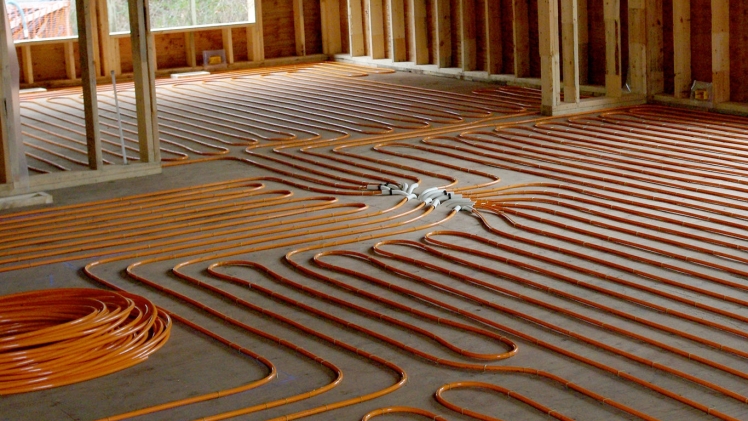Radiant heating systems can either use electric currents or hydronic to supply heat to, for example, the floor. The heat is then transmitted from the bottom to other materials within the vicinity gradually and eventually to the entire room. Heated floors are so popular because they are easy to install and use. They require little or no maintenance and can be a DIY easily. In addition, heating is energy efficient and so uniform compared to traditional heating systems.
Electric radiant floor heating typically uses electricity conducted through the wires to heat up the floor. The electricity usually heats the cables, and the wires heat the floor. This method provides warmth so quickly; therefore requires little or no maintenance and is very easy to install. This heating method is slightly more expensive to heat a home and usually is preferred for heating the floor than an entire home.
How Radiant Floor Heating Operates
First, the radiant heating system heats the floor using electromagnetic waves and thermal radiation, which then cause then causes the radiation of the heat and then be absorbed by other objects in the room. The heating temperatures can be so high and can rise to as high as 104 degrees, which most users set to about 80-85 degrees. It gives indirect diffused heat, which radiates through the room, warming it. It is important to note that heat output should be higher than heat loss present within the room, or there will be no space heating.
Materials That Operate With Heated Floors
Several materials can work with radiant heating, while others may not. However, it is worth noting that you need a material that won’t react with moisture or heat. They include;
- Tile; Ceramics or porcelain tiles are appropriate materials for radiant hating because they are thin and, at the same time, are mineral based and conduct heat well. Another advantage over wood is that it will not rot or degrade.
- Carpet; a carpet has perfect insulating properties, making it inappropriate material for heated floors. When the carpet is warm, the carpet absorbs the heat instead of being dispersed into the room.
- Engineered wood; uses several layers of plywood together with a hardwood veneer. Wood is a poor heat conductor and may take time to heat the room.
Alternatives to Heated Floors
Radiant heating has several alternatives, but we will focus on heated mats.
- Heated mats; are large floor mats that can be laid across a room to help with heating. They are expensive, mobile, easy to operate and can be stored when not operational. They provide a better alternative to traditional heating sources since they are comfortable to walk on and can be laid anywhere at home. To purchase one, worry no more because you can order one on this site.
Conclusion
Radiant heating has several benefits you should take advantage of. Consider acquiring one to experience the comfort that comes with it. Be included; purchase one today to ensure you are okay.

